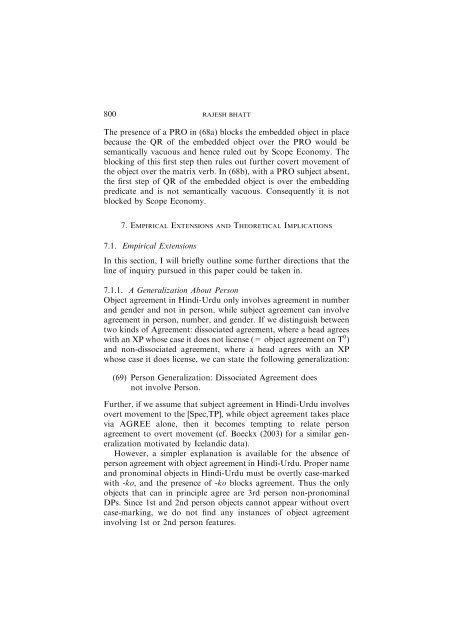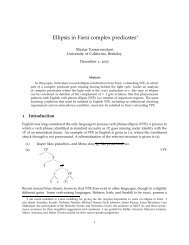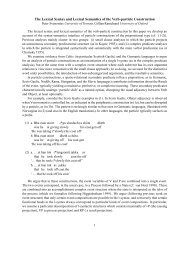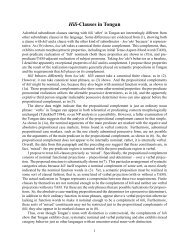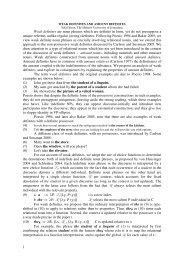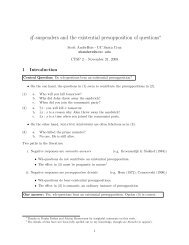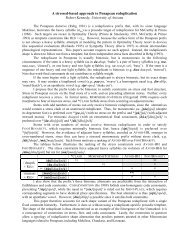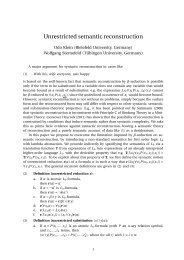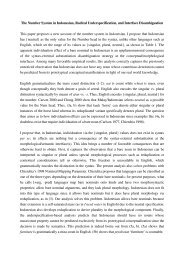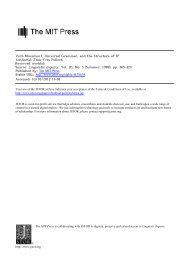LONG DISTANCE AGREEMENT IN HINDI-URDUw This paper ...
LONG DISTANCE AGREEMENT IN HINDI-URDUw This paper ...
LONG DISTANCE AGREEMENT IN HINDI-URDUw This paper ...
Create successful ePaper yourself
Turn your PDF publications into a flip-book with our unique Google optimized e-Paper software.
800RAJESH BHATTThe presence of a PRO in (68a) blocks the embedded object in placebecause the QR of the embedded object over the PRO would besemantically vacuous and hence ruled out by Scope Economy. Theblocking of this first step then rules out further covert movement ofthe object over the matrix verb. In (68b), with a PRO subject absent,the first step of QR of the embedded object is over the embeddingpredicate and is not semantically vacuous. Consequently it is notblocked by Scope Economy.7. EMPIRICAL EXTENSIONS AND THEORETICAL IMPLICATIONS7.1. Empirical ExtensionsIn this section, I will briefly outline some further directions that theline of inquiry pursued in this <strong>paper</strong> could be taken in.7.1.1. A Generalization About PersonObject agreement in Hindi-Urdu only involves agreement in numberand gender and not in person, while subject agreement can involveagreement in person, number, and gender. If we distinguish betweentwo kinds of Agreement: dissociated agreement, where a head agreeswith an XP whose case it does not license (= object agreement on T 0 )and non-dissociated agreement, where a head agrees with an XPwhose case it does license, we can state the following generalization:(69) Person Generalization: Dissociated Agreement doesnot involve Person.Further, if we assume that subject agreement in Hindi-Urdu involvesovert movement to the [Spec,TP], while object agreement takes placevia AGREE alone, then it becomes tempting to relate personagreement to overt movement (cf. Boeckx (2003) for a similar generalizationmotivated by Icelandic data).However, a simpler explanation is available for the absence ofperson agreement with object agreement in Hindi-Urdu. Proper nameand pronominal objects in Hindi-Urdu must be overtly case-markedwith -ko, and the presence of -ko blocks agreement. Thus the onlyobjects that can in principle agree are 3rd person non-pronominalDPs. Since 1st and 2nd person objects cannot appear without overtcase-marking, we do not find any instances of object agreementinvolving 1st or 2nd person features.


